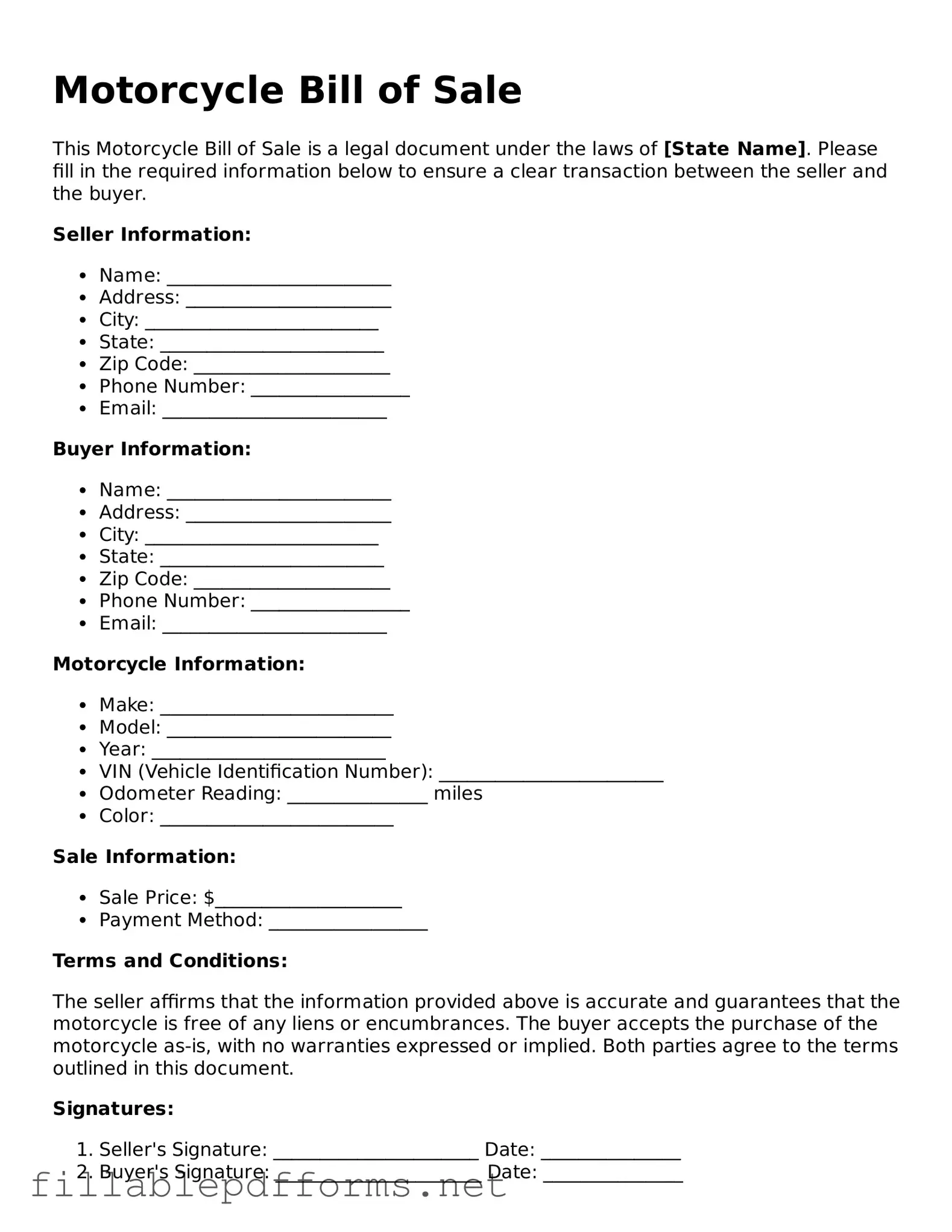When it comes to buying or selling a motorcycle, having the right documentation is crucial for a smooth transaction. One essential document in this process is the Motorcycle Bill of Sale form. This form serves as a legal record of the sale, providing vital information about the motorcycle, the buyer, and the seller. It typically includes details such as the make, model, year, and Vehicle Identification Number (VIN) of the motorcycle, ensuring that both parties have a clear understanding of what is being exchanged. Additionally, it outlines the purchase price, date of sale, and any conditions of the sale, such as whether the motorcycle is sold "as-is." This document not only protects the interests of both the buyer and seller but also serves as proof of ownership transfer, which is essential for registration purposes. By having a properly filled-out Motorcycle Bill of Sale, you can avoid potential disputes and ensure that your motorcycle transaction is both transparent and secure.
